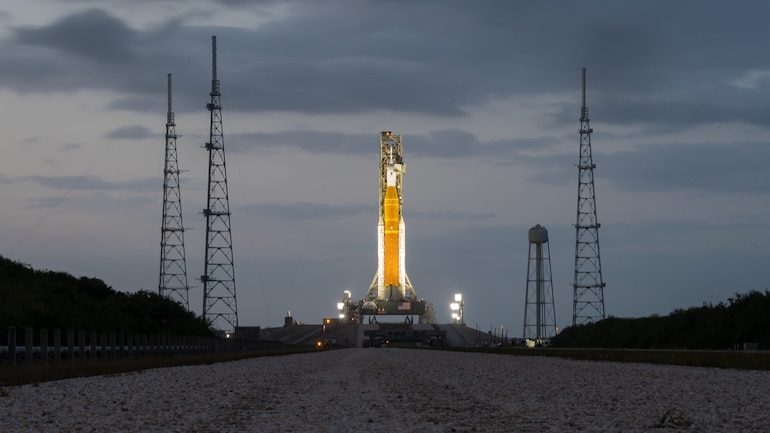
Nasa to repair leaky Artemis-1 moon rocket on launchpad, return to assembly building later
A few days after rubbing the second attempt to launch the Artemis-1 mission on the Moon, NASA will repair leaks on the rocket on the launch ramp itself. The launch vehicle with the Orion spacecraft will then be transported to the vehicle assembly building (VAB). Artemis engineers will replace the seal on an interface, called rapid disconnection, between the liquid hydrogen fuel supply line on the mobile launcher and the space launching system (SLS) during repairs. It was a rapid disconnection which had developed a hydrogen leak, after which the launch attempt was rubbed.
“The execution of the work on the PAD requires technicians to set up an enclosure around the work area to protect the equipment from weather conditions and other environmental conditions, but allows engineers to test the repair under cryogenic conditions Or Supercold, “said NASA in an update of the blog. On Saturday, engineers detected hydrogen fuel that flee the engine section at the bottom of the rocket, forcing the Tanking operation to stop at the start of troubleshooting. It is believed that it was a gap around a seal in the food line, because the countdown has remained active.
The space launch system (SLS) with the Orion spacecraft must be returned to the vehicle assembly building (VAB) to carry out additional work that does not require the use of cryogenic installations available only on the PAD. “The execution of the work on the PAD also allows teams to collect as much data as possible to understand the cause of the problem,” said NASA, adding that the rocket will have to be transferred to VAB to meet current requirements by the range Oriental for certification on the flight termination system. Meanwhile, engineers will also check the plates coverings on other umbilical interfaces to ensure that there are no leaks on these locations. With seven main umbilical lines, each line can have several connection points.
The trial flight of $ 4.1 billion is the first stage of the Artemis program of the NASA of renewed lunar exploration, named after the twin sister of Apollo in Greek mythology. Twelve astronauts walked on the moon during the Apollo program of NASA, the last time in 1972.
With a two -week breeding period, the rocket is now anchored until the end of September or October. NASA will bypass a high priority SpaceX astronaut flight at the international space station scheduled for early October.

